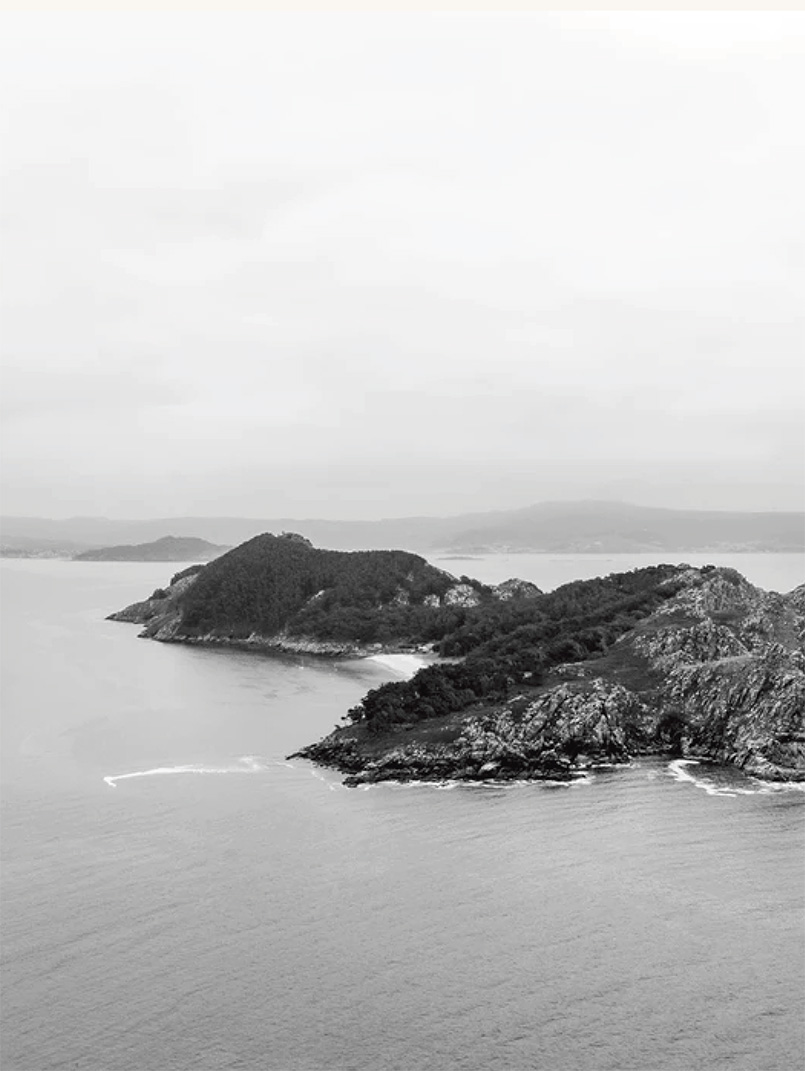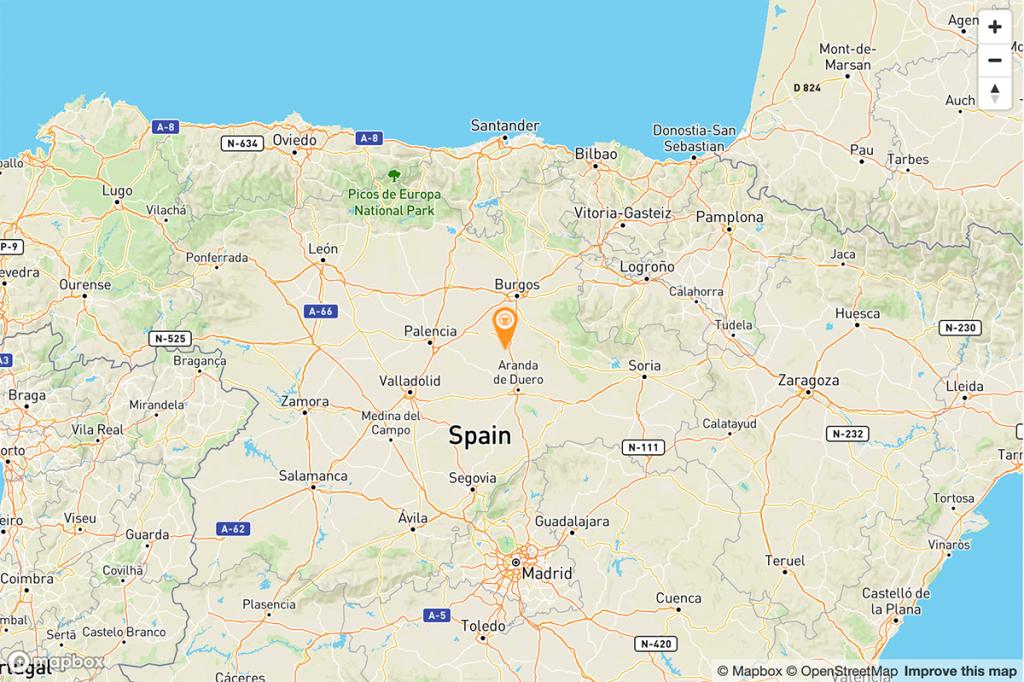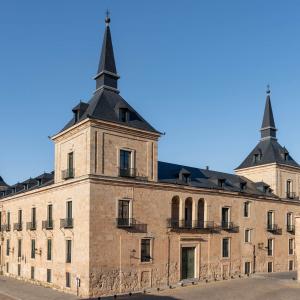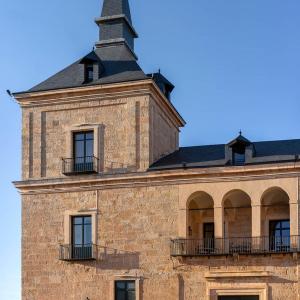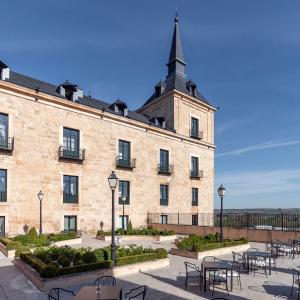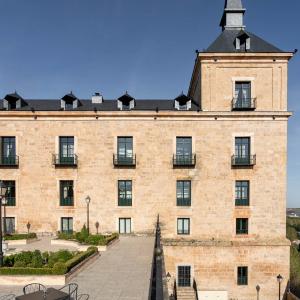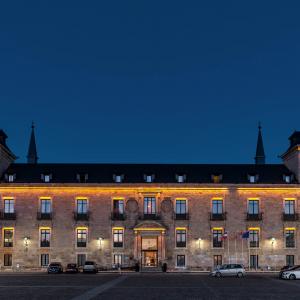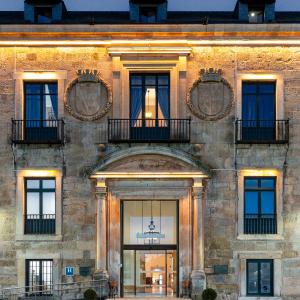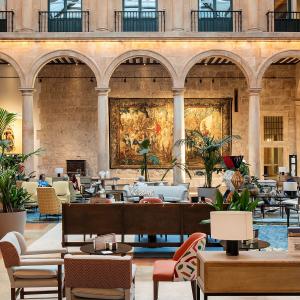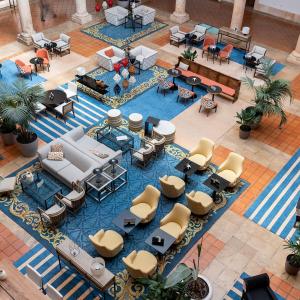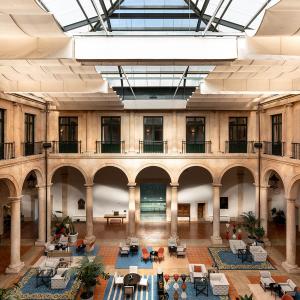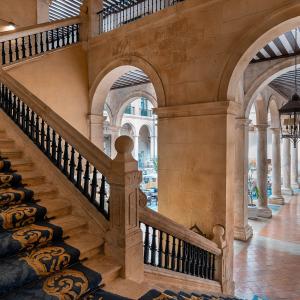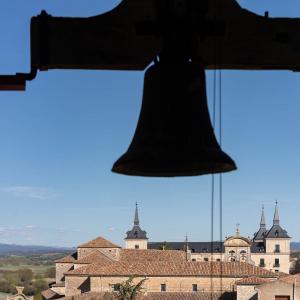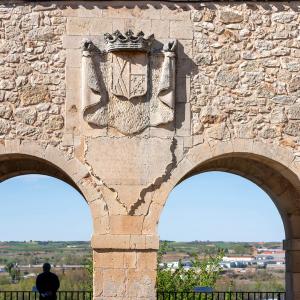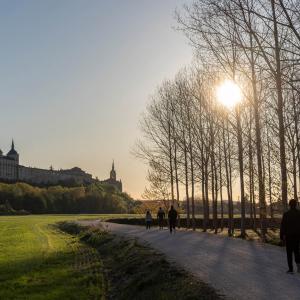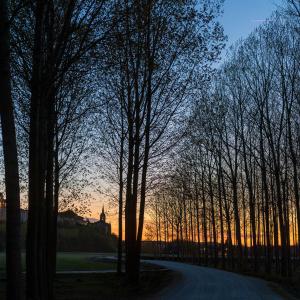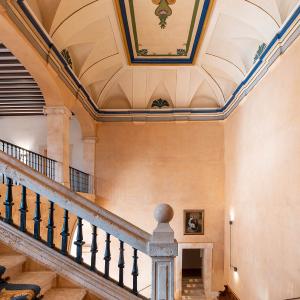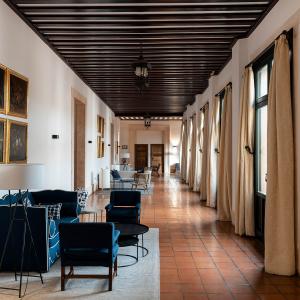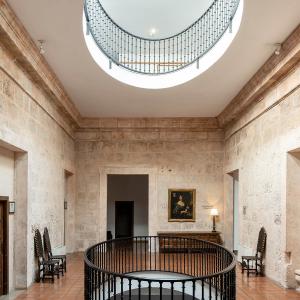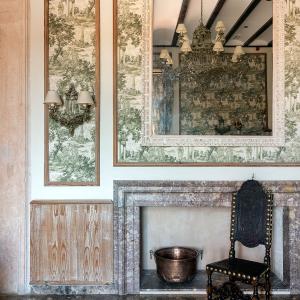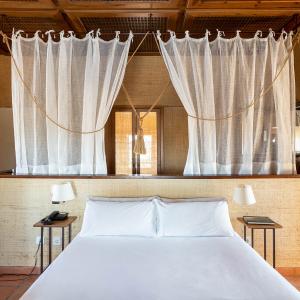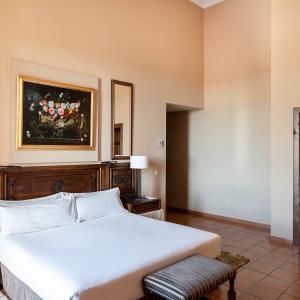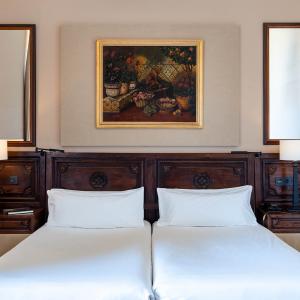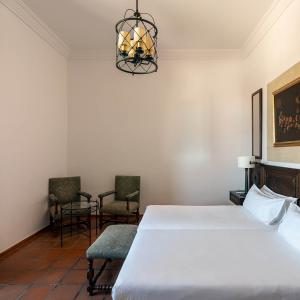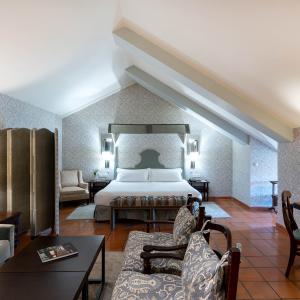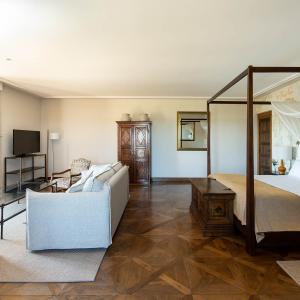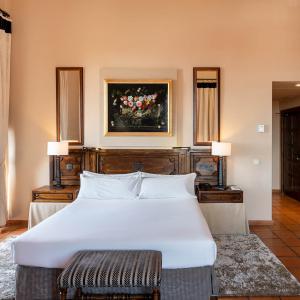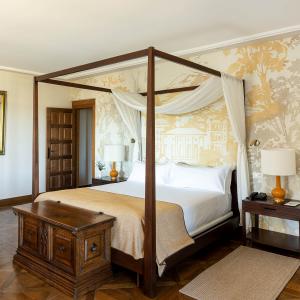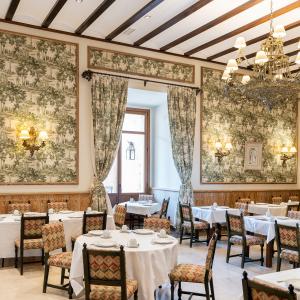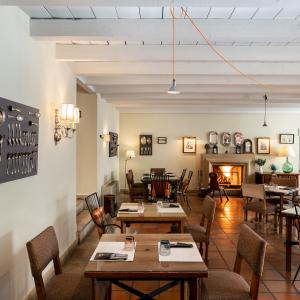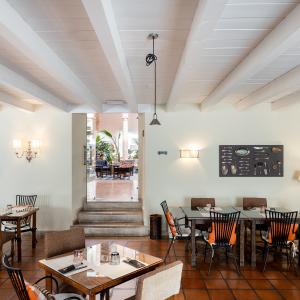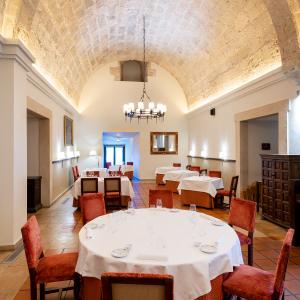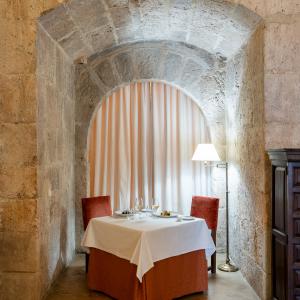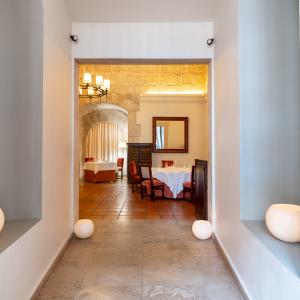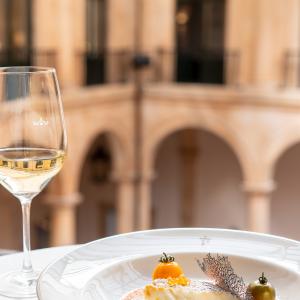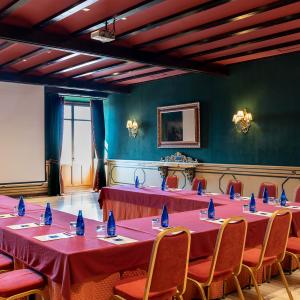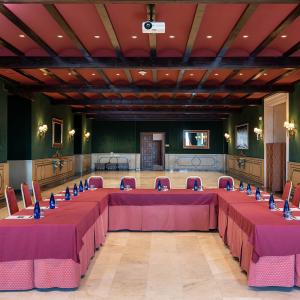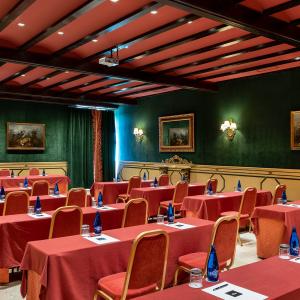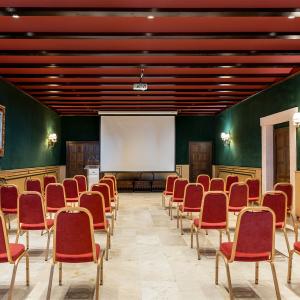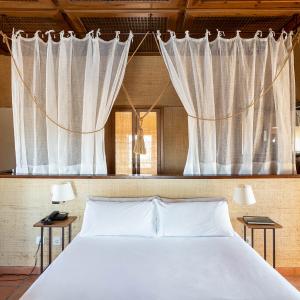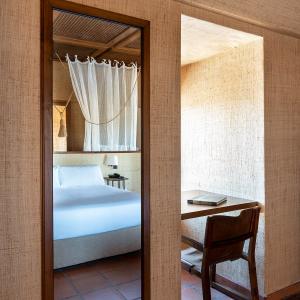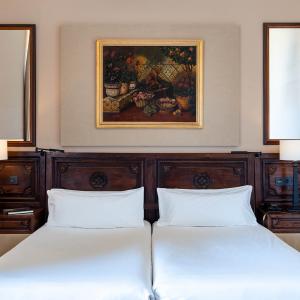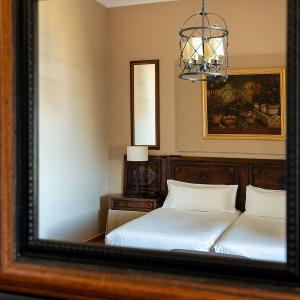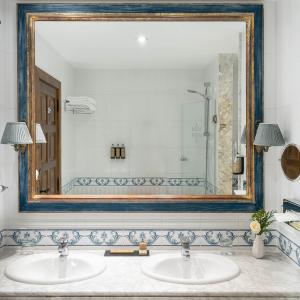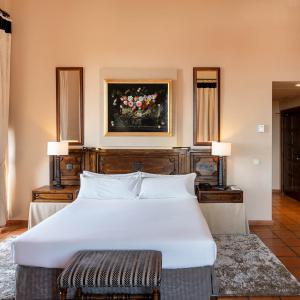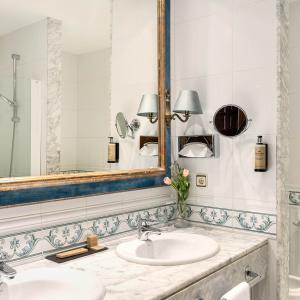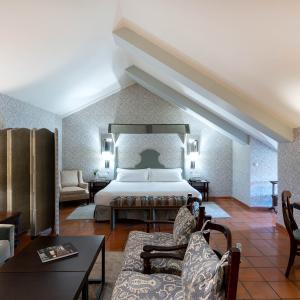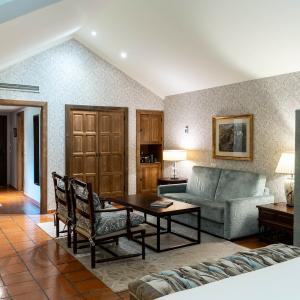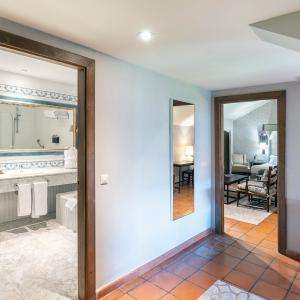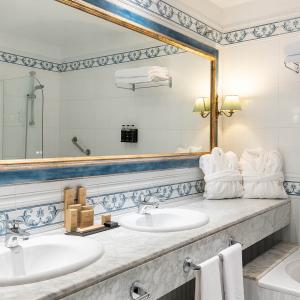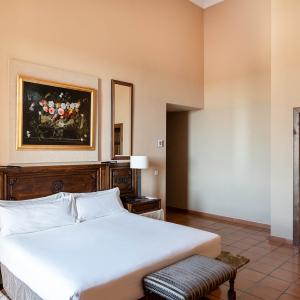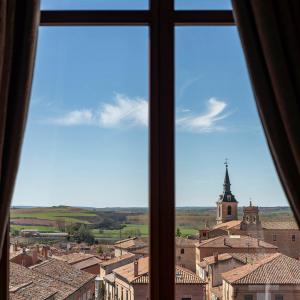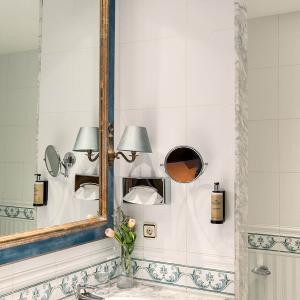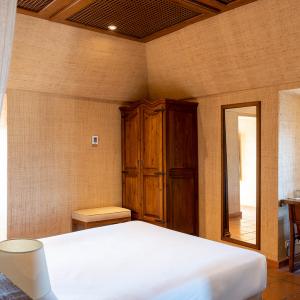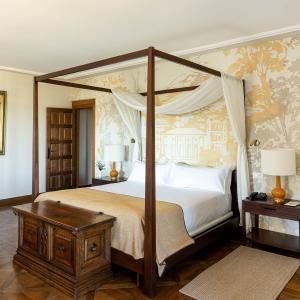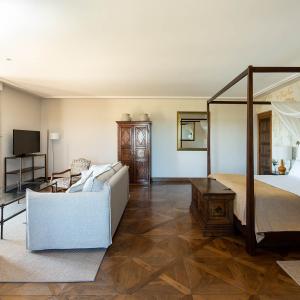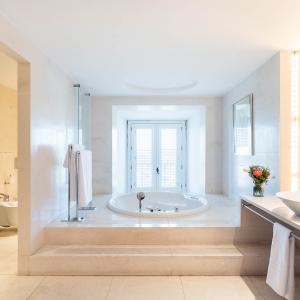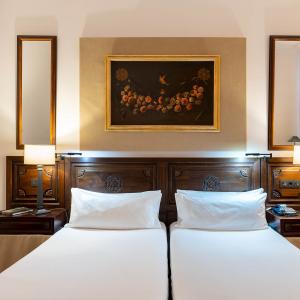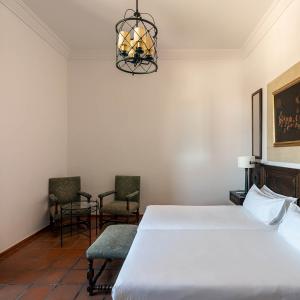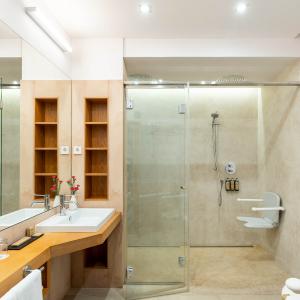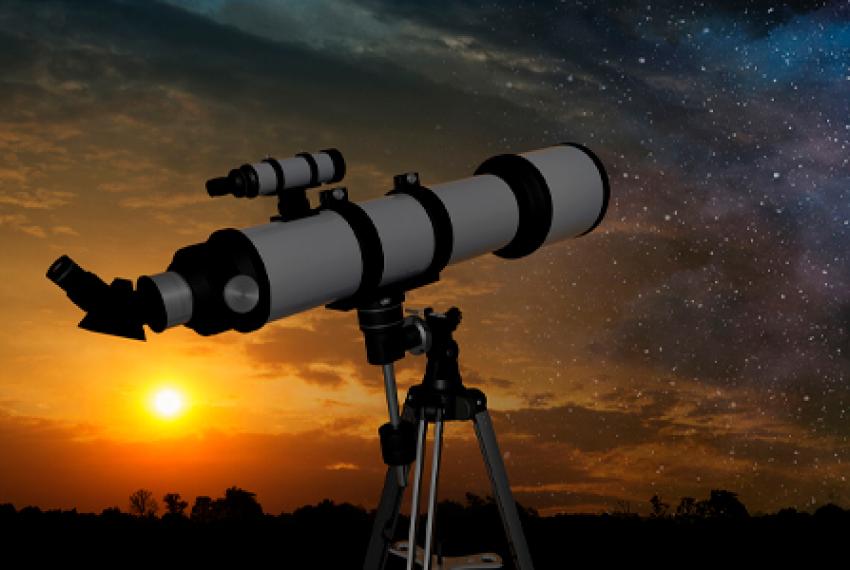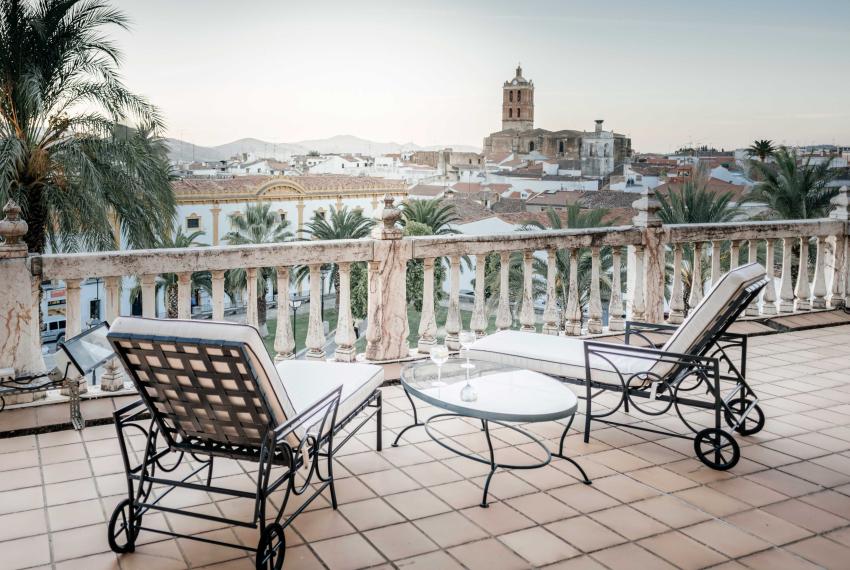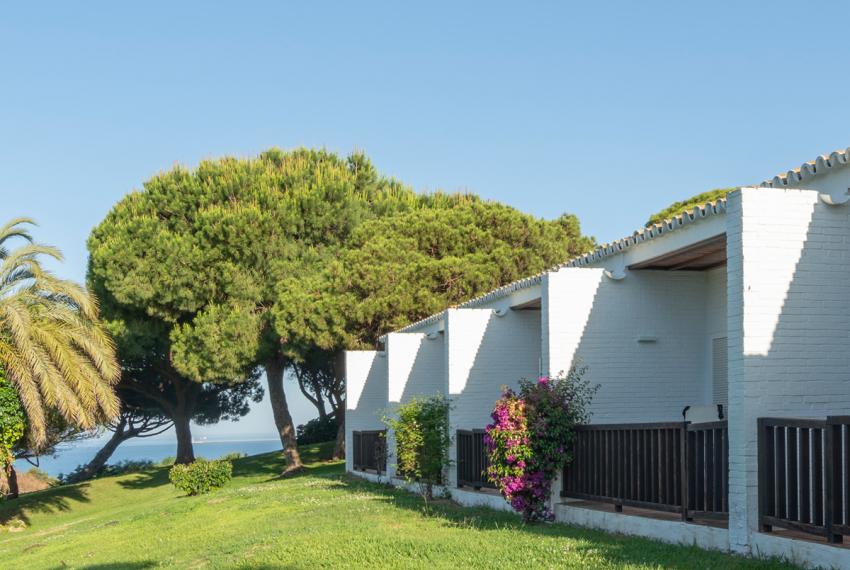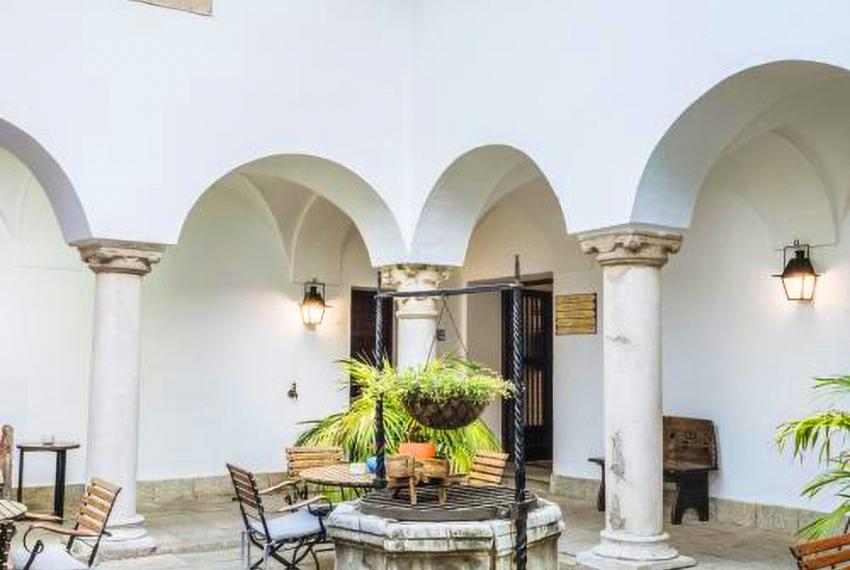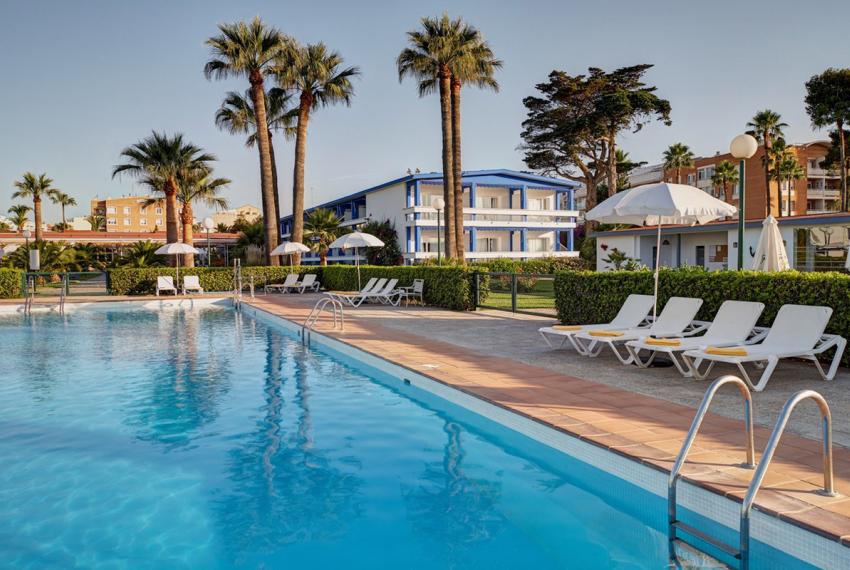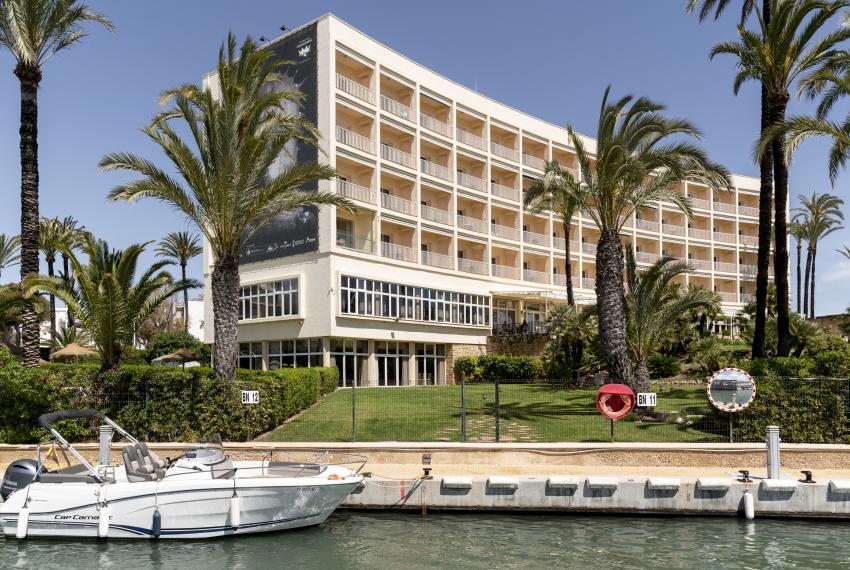Parador de Lerma
Plaza Mayor, 1 09340 Lerma (Burgos)
Register number: 09/000320
+34 947177110
[email protected]You enjoy the Parador de Lerma already from dozens of kilometres away. The Ducal Palace of Lerma stands, elegant and sober, at the top of the town; it has stone walls, more than 200 iron balconies and four towers with slate roofs.


This 17th century palace, which the Duke of Lerma had built on top of a medieval castle, was the envy of the court. A royal wedding was held here: a queen gave birth, and Napoleon Bonaparte slept here. Besides the imposing façade, highlights include the cloister and its inner courtyard, where Lope de Vega’s works were first performed 500 years ago. You can now take the chance to rest and have a coffee under its panoramic window and admire the columns and semi-circular arches.
The Parador is located in the Plaza Mayor of Lerma, which is one of the largest in Spain (almost 7,000 square meters). The town also has a major network of convents and monasteries such as the Collegiate Church of San Pedro and the Convent of San Blas.
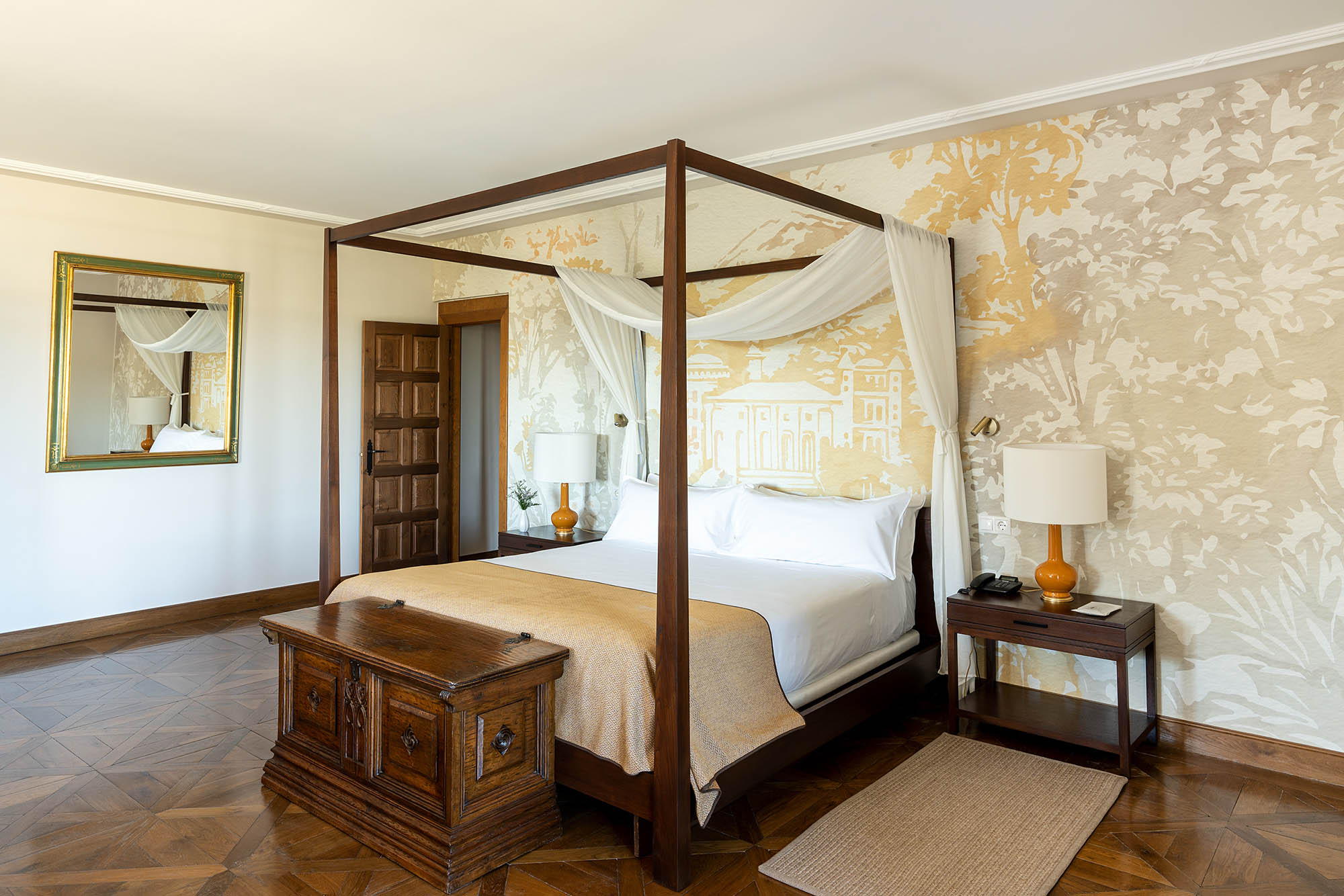
Rooms to dream about
The rooms at Paradores combine design and modern services to perfection. In each room you can enjoy the comfort and elegance of the design and furnishings, and the best views in destinations you will want to return to again and again.
All the comforts you need
air conditioning
Elevator
Laptop safe
Breakfast in the room
Gastronomic space
Handicapped facilities
Paid parking
Gym
Minibar with a carefully selected selection of products
Flat screen TV
Electric car charging station
Restaurant
Hairdryer
Room service
Digital press and magazines service
ChromeCast technology
Free Wifi
The best regional cuisine in unique spaces
Paradores offers the exclusive experience of enjoying regional, local and local cuisine in unique spaces. Our cuisine is strongly linked to the places where the 98 hotels are located, presenting the best gastronomy from the different Spanish regions. Pioneers in local cuisine, we have reinforced our commitment to local products in search of the best raw material and reaffirming our commitment to sustainability.
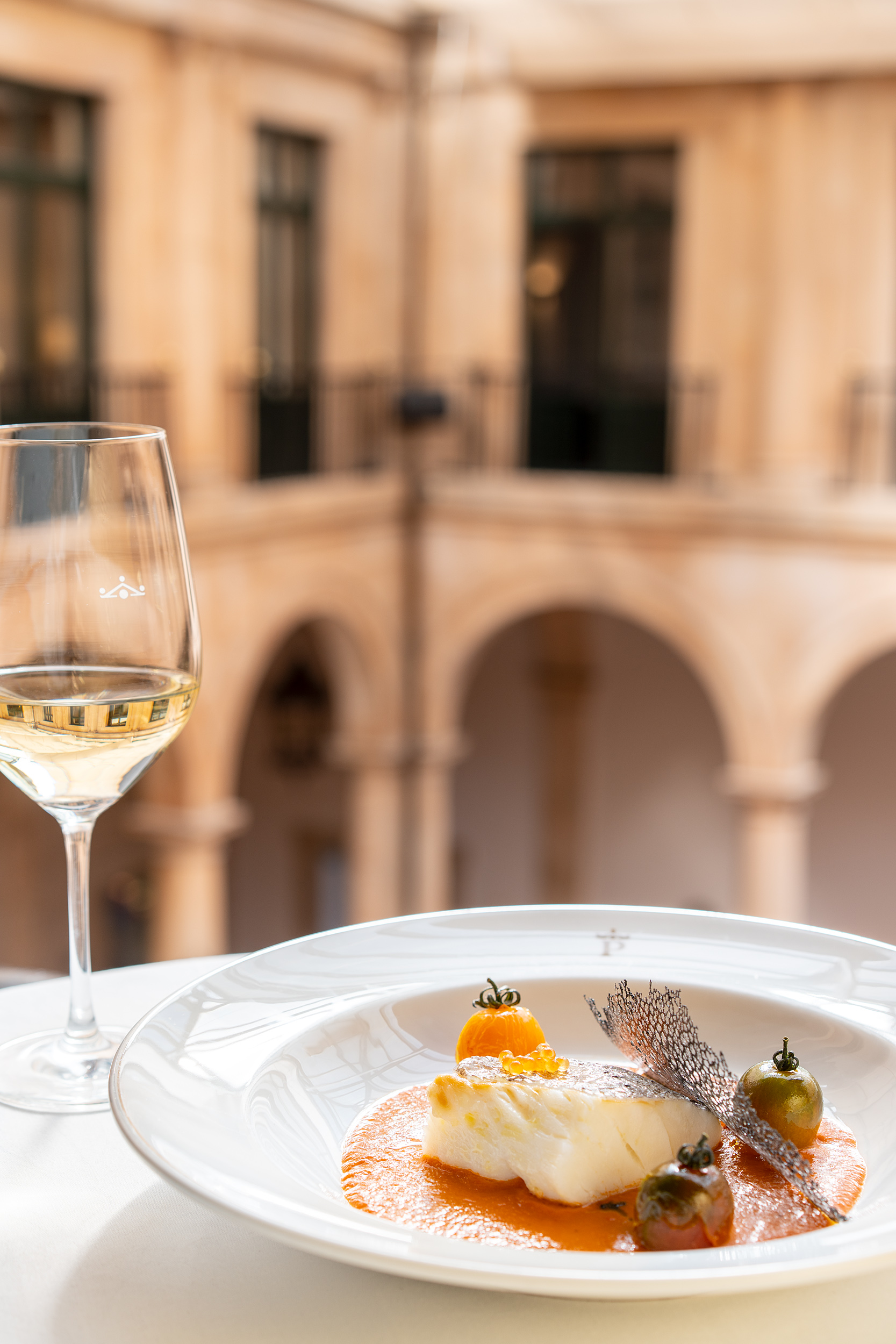
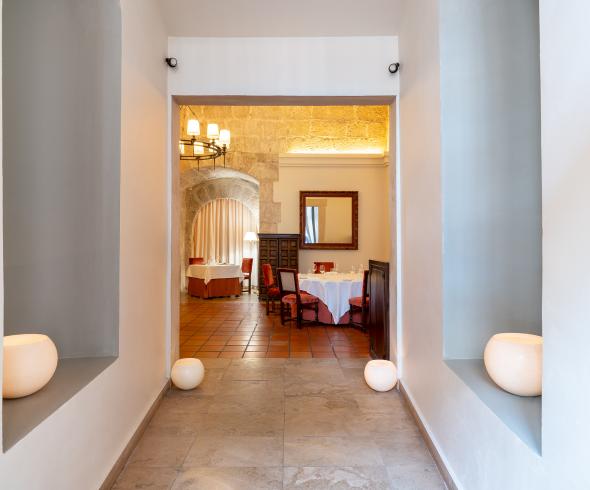
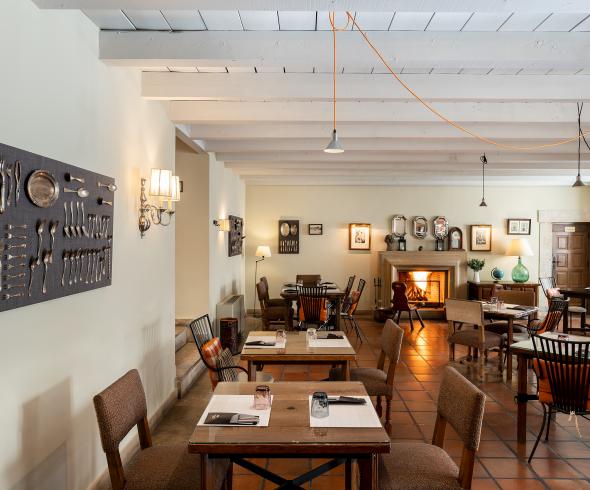
Take advantage of the Paradores offers
The Duke of Lerma turned the town into a place of recreation for kings, nobles, politicians and courtiers. Besides building his palace, now the Parador, an important network of convents and monasteries was created in Lerma thanks to Francisco Gómez de Sandoval-Rojas. A highlight is the Collegiate Church of San Pedro, which was built in the 17th century and has two period organs.

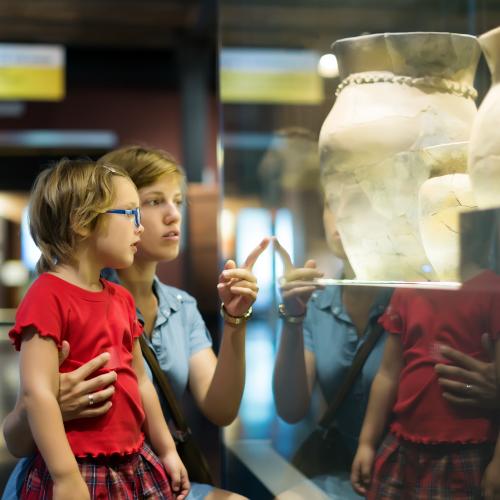
The collegiate church is located in Plaza de Santa Clara, where the mausoleum containing the remains of the famous guerrilla fighter of the War of Independence known as “Cura Merino.” A few metres away is the Mirador de los Arcos, where you can enjoy the best panoramic views of the fertile plain of the river Arlanza. The route through the town of Lerma can’t end without visiting the Prison Arch and the Ducal Passage, which connects the Parador to the Collegiate Church of San Pedro and was built so that the Duke could attend religious worship without having to go out into the street.
You might also use your visit Lerma to see other towns filled with historical buildings in the Arlanza Valley, such as Covarrubias, Santo Domingo de Silos and Salas de los Infantes.
The Parador de Lerma is 38 km from Burgos. It is a 17th century palace, a clear example of Spanish Herrerian architecture. It has a large number of rooms and a covered central courtyard surrounded by colonnaded galleries, a place with its own soul you can enjoy at any time of day, with its endless possibilities for all kinds of events.
